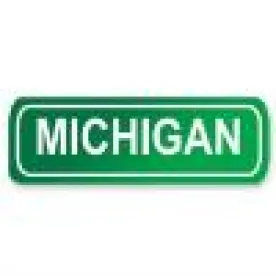What? – If you have an industrial/manufacturing facility in Michigan, and storm water runoff is exposed to industrial materials and/or industrial activities which discharge to waters of the state, you are likely subject to storm water requirements. New Industrial Storm Water Permits in Michigan are now being rolled out which include new visual monitoring requirements. These new permit requirements mandate that storm water samples be collected for visual analysis only, and do not require lab analysis to be performed — although some permits may have additional requirements for lab analyses. For facilities with general permits, those in cycle year 4 and 5 watersheds already have these requirements in place, while facilities in cycle year 1, 2, and 3 watersheds will have these requirements written into their renewed permits in the coming years. For facilities with individual NPDES permits, these new requirements will be written into any new or renewed permits as well.
Why? – These requirements are being added to Michigan’s storm water program in order to ensure the quality of storm water leaving industrial facilities around the state. These updates bring Michigan in line with Federal guidelines on storm water management.
How? – The first step is to make a plan. A written plan is actually a requirement of the updated permits, in which facilities must lay out where and how storm water samples will be taken. A proper plan should identify which personnel will be involved in sampling and determine which outfalls or points of discharge will need to be sampled. A plan should also allocate the proper supplies for sampling, including clear glass containers, labels, rain gear, and any equipment needed to access outfalls or points of discharge.
Who? – Any trained employee can take the sample, however the Industrial Storm Water Certified Operator for the facility (as listed on your SWPPP) must visually assess the sample as soon as possible. If the operator is not available to immediately assess the sample, it may be kept cold in a sealed container for up to 48 hours after collection. For larger facilities with many outfalls or points of discharge, it might be necessary to have a team of people ready to deploy during a storm event in order to capture all of the necessary samples within the first 30 minutes of storm water discharge.
When? – Samples must be collected quarterly, with very few exceptions. Because weather can be very unpredictable, the best strategy is to collect and visually assess your samples as early in the quarter as possible to avoid missing out on proper conditions for collecting a sample at the end of the quarter, such as a dry spell or rain with dangerous sampling conditions like lightning. Remember, safety always comes first, never collect samples during dangerous weather conditions! During winter months, snowmelt leaving the site can be sampled in lieu of rainwater. Samples must be taken at least 72 hours after the last storm event that caused a discharge of storm water at your facility, and within the first 30 minutes of the beginning of a new storm water discharge. Note that sampling period does not necessarily start at the beginning of rainfall/snowmelt, but when that water starts to leave the property.
Where? – Each storm water discharge from your facility needs to be sampled, including outfalls (where storm water goes directly into surface waters of the state) and points of discharge (where storm water goes into a storm sewer system). If a discharge is considered to be “substantially identical” to another on site, only one must be sampled per quarter, as long as the certain requirements are met and documented.
Other Changes – On July 20, 2015, MDEQ began implementing a new online tool to streamline water resources permitting and reporting. The new system, called MiWaters, will facilitate electronic NPDES permit submissions (including storm water permits) and replace the current electronic DMR system, as well as offering other features.
Karen Lutz is the author of this article.



 />i
/>i

